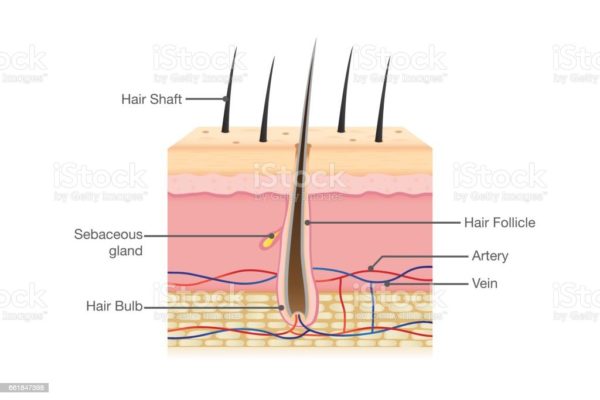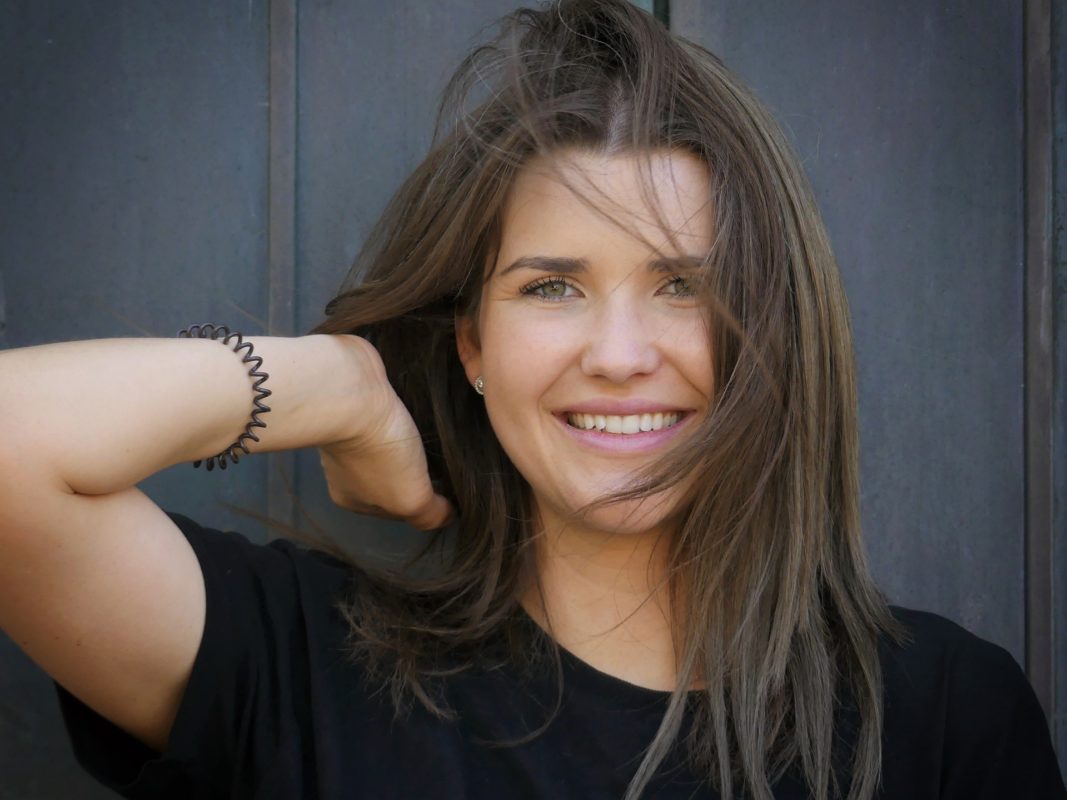Hair plays an important role in our well-being and can be a signal of sexual attraction, health and status. If we are happy with how it looks, i.e., having a good hair day, studies have shown our confidence increases. However, the opposite is true if scalp hair is thinning, or has severe damage such as broken or fractured ends. In these cases, hair quality can significantly impact self-esteem and well-being.
The Structure of Hair
Hair is a complex structure that is made up of proteins, lipids, melanin, and metal ions. There are three main structural components: the cortex, cuticle, and medulla. The cortex makes up the bulk of hair and consists of crystalline a-helical proteins surrounded by matrix proteins arranged in rope-like filaments.
The cortex is what gives hair its strength, and when damaged will lead to easy breakage. Surrounding the cortex are six to eight layers of cuticle cells which overlay each like shingles on a roof, giving hair its protection from external insults. The cuticle is the strongest part of hair, and if one cuticle cell is broken off, for example during combing, there are others underneath to take its place.
The medulla is at the centre of the fibre and varies in distribution and amount. It has a low level of keratins but is high in lipid content? Proteins contribute to more than 85% of human hair total structure, and a significant proportion of these proteins are keratins. The definition of a keratin is a protein containing high levels of cystine amino acid which cross-link different protein chains together via a disulfide bond (-S-S-), giving them high tensile strength. Keratins are the same proteins found in hooves, nails, and turtle shells, making these the toughest natural materials known.
Proteins are crucial for hair health, but other structural components are also important. Lipids, mainly saturated and unsaturated fatty acids, make up 6% to 8% of the total weight of hair. They found at the junction between cuticle cells and also between cortical cells. These lipids are rather like mortar that holds a brick wall of protein together. If removed by excessive washing or by chemical processes the whole structural integrity of the hair fibre can be compromised. One important example is the f-layer, which is a chemically bound lipid found on the outside surface of each cuticle cell. Its presence makes the outside surface of hair hydrophobic (water drops will bead on hair) and gives hair its soft feel.
The last important component of hair is metal ions such as calcium, magnesium, copper, and iron. There is a mix of endogenous metals incorporated in the hair follicle and subsequently the hair fibre as well as exogenous metals accumulated from other sources such as tap water and pool water. Copper and iron, which can lead in certain cases to extreme damage in combination with UV or colouring.

What Causes Increased Hair Loss?
Exposure to oxidation, either by ultraviolet (UV) light or certain colorants and bleaches, can remove this lipid. This making hair lose its hydrophobicity and making hair more susceptible to tangles and breakage. Melanin gives hair its natural colour and does provide some protection from UV exposure. But itself is not considered to be very important for hair health, as it makes up only 3% total weight of hair, even for dark hair. However, approximately 50% of women use hair colouring products to either change their hair’s natural colour. (e.g., from brown to blond) or to cover up consequences of melanin production stopping (i.e., to cover Grey hair).
Hair Growth Cycle
Hair grows relatively slowly at approximately one centimetre a month. So the structural components described above need to be resilient to survive full anagen growth. Which can be several years. For example, a woman with long hair (>30 cm) will have hair tips which are almost 3 years old. Unlike skin, hair is dead tissue so cannot regenerate itself, and once severely damaged the only possibility is to cut it off and wait until it regrows. Thus understanding what processes can damage hair, how to evaluate factors that make hair more susceptible to damage, and how to minimize this damage is important.

